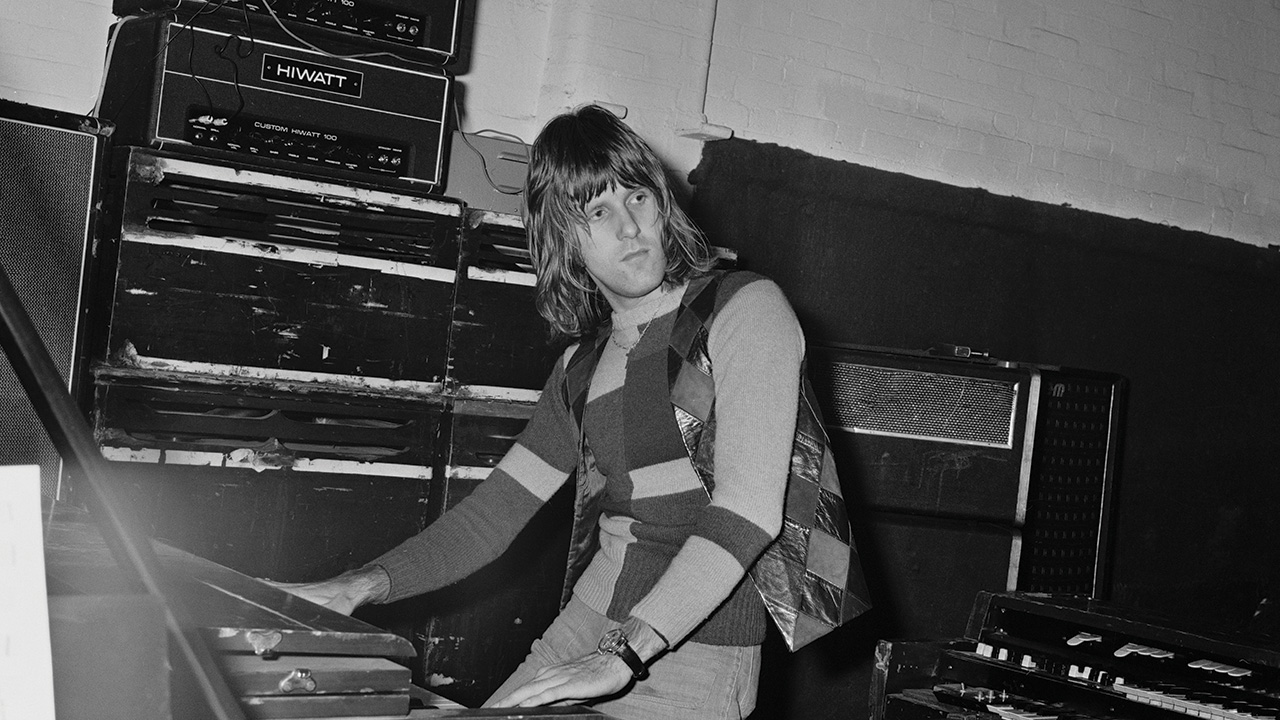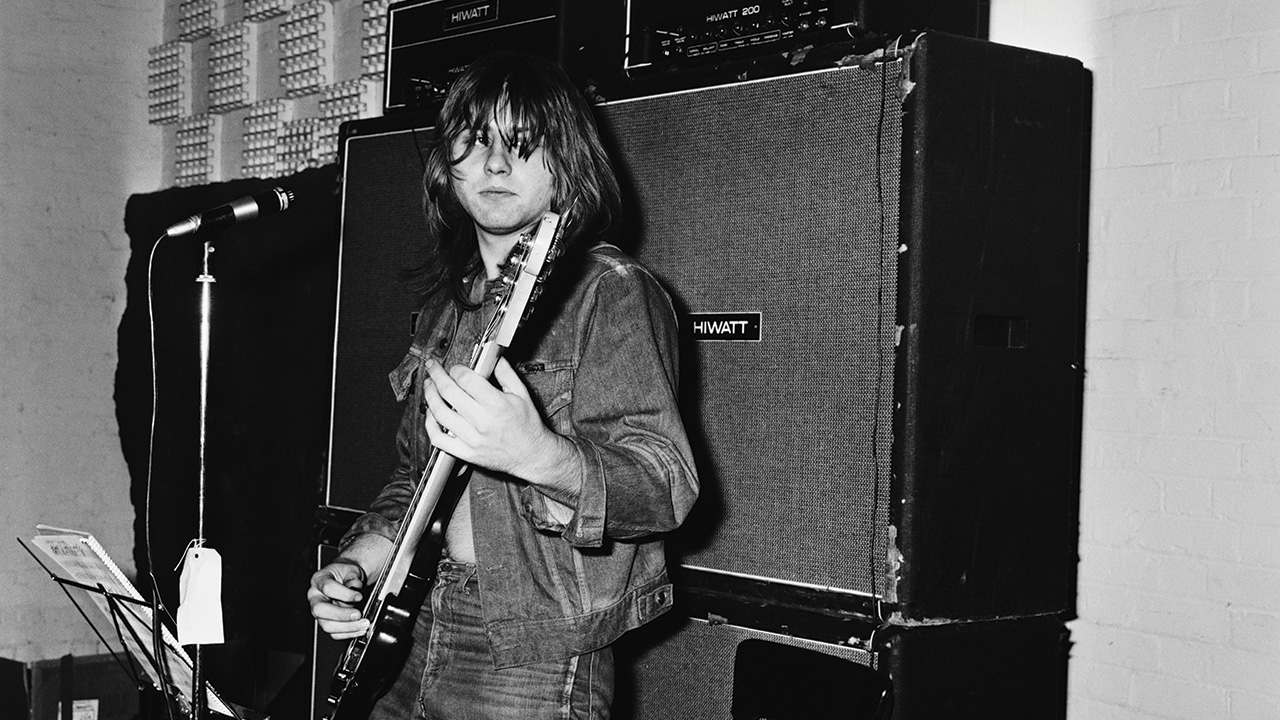
Greg Lake could never be described as someone who was slow in coming forward, especially if he felt he needed to give you the benefit of his opinion. “If you want to play that kind of music, you should play it on your solo album. I’m not really interested in that sort of thing” is what Keith Emerson remembered Lake saying to him immediately after hearing the opening motifs of a brand new piece intended for their second album.
Having invited Lake over to his apartment to play him the composition, he hadn’t expected such a stony-faced negative reaction. Already taken aback by Lake’s brusque dismissal of his work, Emerson was astonished further still as the bassist and vocalist got up and promptly left the building.
That astonishment very quickly turned to anger. He’d been inspired to write the piece after Carl Palmer had come up with a knotty drum pattern. Galloping across a 10/8 metre and drawing upon influences as diverse as Frank Zappa and his beloved Argentinian composer, Alberto Ginastera, it felt and sounded like the future to him.
To have it so roundly rejected in such an off-hand manner deeply offended him. What had been intended to be a celebratory unveiling to the process of writing and recording of the follow-up to their debut album was now mired with discord and uncertainty. Picking up the telephone, Emerson got straight onto John Gaydon, the ‘G’ of EG Management, telling him in no uncertain terms that Emerson, Lake & Palmer were finished.

Following a small warm-up gig in Plymouth, ELP had arrived on the world stage amid the roar and flash of cannons blasting from the Isle Of Wight Festival in August 1970 in front of more than 600,000 people. Now, just a few short months later, with their self-titled debut album riding high on both sides of the Atlantic, the group were in debt somewhere to the tune of £30,000 and needed another successful album to stand any chance of recouping and becoming a profitable concern.
At a hastily convened meeting at EG Management’s offices the next day, the differences between them were bluntly aired without anyone pulling punches. In The Nice, Emerson was used to holding a dominant position, and while bassist Lee Jackson and drummer Brian Davison would express their views on specific passages or arrangements, the group’s creative direction of travel, governed by Emerson, was never questioned. However, the situation he now found himself in shouldn’t really have been a surprise.
Blessed with a sometimes overbearing self-confidence that belied his 23 years, Greg Lake’s opinions of his own abilities and strengths were bolstered by his time in King Crimson and their meteoric success. That lack of diplomacy was something he carried over from Crimson’s rehearsal room, a tough and sometimes brutal environment but one in which Lake was more than capable of holding his own.
Sign up below to get the latest from Prog, plus exclusive special offers, direct to your inbox!
While he had spent some time at Wessex Studios’ mixing console as they recorded their 1969 debut In The Court Of The Crimson King, in comparison to Emerson’s long-established track record of making albums, Lake was a relative novice. Little wonder, then, that tensions and a few eyebrows were raised after Lake had unilaterally declared that he alone would be getting the producer’s credit on ELP’s first album.
For his part, Lake’s objection to Emerson’s new piece wasn’t that he didn’t like it but that it wasn’t something he regarded as commercial. After all, it wasn’t the gothic ruminations of Emerson’s The Three Fates that had secured ELP round-the-clock airplay on American radio but the Lake-penned Lucky Man, which, notwithstanding Emerson’s ebullient Moog solo at the end, was essentially a conventional ballad.
What Lake wanted from Emerson was material he could collaborate with and build upon.
Also on that day in EG’s offices, Carl Palmer, who hadn’t been consulted by either faction on the issue at hand, had not unreasonably argued, “Don’t I get a say?” Things were very much resting on a knife-edge. Was Emerson being dictatorial? Was Lake being a prima donna? Between their respective egos, the truth was probably somewhere in between.
Eventually, both parties were talked down off the ledge by an emollient John Gaydon. With studio time already booked in, Emerson and Lake were persuaded to give things another go and an uneasy truce was agreed. That all this had to be hashed out and mediated before a single solitary note of Tarkus was committed to tape illuminates the inner world of the band.

“ELP never argued over money, never argued over any women, never argued over any affairs like that. The only thing we’d argue over would be music. We could argue over four bars for about four years,” says Carl Palmer with a laugh as he reflects on the interpersonal dynamics that would inform the band throughout their career.
“Yes, there were some real tensions within ELP, but that’s good, to tell you the truth. You always get someone who wants to play a little bit safe and you always get somebody who wants to turn it up. Because I wasn’t one of the main writers, my position was as a referee between those two. I wouldn’t side with anyone – I would say exactly what I thought about the music, about what they played or sung.
"They would take it from me if I said that something was not that good or that I didn’t like the writing. I mean, no one else would ever go up to them, no one from the record company, the management, it wouldn’t happen that way. There was an inner trust, which ran very deep. They knew I wasn’t going to walk in with a carrier bag of songs and say, ‘This is what we should be playing.’ I was about trying to get the best out of everyone and they understood that. Greg trusted me implicitly on that score.
“There were moments between us, of course, there are always going to be moments, but I’ll tell you what, not one of us ever sat on the fence. We each had a role and although I wasn’t a writer my position was about the organisation of the band, which I got involved with in a big way. I’d write everything down and make sure everybody was literally on the same page. We all had a part to play; we wanted Greg to write us the three-minute songs that’d get us on the radio and Keith to steer the boat toward the prog rock that we all wanted.”
For a work whose central narrative addresses conflict, when it came to stepping into Advision Studios during the chilly winter of January 1971, in the end, it was their ability to compromise that makes the album greater than the sum of its parts. While it’s undoubtedly true that Emerson established his momentum as a mature composer with the Tarkus suite, and created a piece that has since gone on to be one of his enduring legacies, it’s equally true that it wouldn’t be the same beast without Lake’s decisive contributions.

Though reticent to begin with, Lake now threw himself into the piece at Advision with some remarkable bravura performances of his own. With the hypocrisy of politics and religion as his lyrical targets, Stones Of Years provides a moment of reflective respite from the racing convulsions of the odd metres, while Mass introduces a collection of characters and archetypes that sound like they could have been conjured up by Lake’s ex-bandmate, King Crimson’s Peter Sinfield.
Lake’s track Battlefield, brilliantly set up by Manticore’s frenzied climax, brings in a sweeping, sombre majesty. For all Emerson’s association with the Moog synthesiser, the track, and indeed much of the album, is largely a vehicle for traditional keyboards and the Hammond organ’s endless versatility. Throughout the synth is used sparingly in a painterly highlight rather than the principal colour. Of course, it’s this very spareness that ensures that when it does appear the moment is both dramatic and extraordinarily memorable.
However, on Battlefield it’s Lake’s soulful lead guitar soloing, which conjures Peter Green’s thoughtful style in early Fleetwood Mac, that provides not only the track’s emotional release but in some respects, the climax of the piece overall. It’s as though all of the preceding movements were building to this point. As guitar lines swoop and wheel like carrion birds above the carnage the lyrics so graphically describe, Lake’s vocal beautifully articulates both the sense of loss and judgemental anger invoked within the track.
“Once Greg got the guitar sound he wanted, they were almost always like a first take, there was never a problem there,” says Palmer. “The vocals, on the other hand, always took longer.”

Throughout the Tarkus suite, Palmer’s work not only underpins but actively knits together the music through his energetic and highly orchestral approach, providing a constant flow of percussive annotations that not only accent and dramatise key moments but crucially give each section a seamless continuity. The time that he and Emerson spent running through the piece pays off with a wholly integrated drum score that is both intricate while being extremely musically robust.
The 21-minute opus remains a personal favourite of his. “I think the initial theme, when it starts with the voices producing the chord into the 10/8 or 5/8 time signature, that is, the main Tarkus theme, is absolutely stunning. I mean, even today, my hair still stands up on the back of my neck. The songs are all great and really cool but the actual theme itself, as it starts the piece and where it ends, it really is marvellous.”
What makes all this astonishing is that it was all done in five days. Recorded in a series of discrete sections Palmer says the final running order for the tracks required 17 separate edit points. “We marked out the sections where you could actually cut without a chord or a cymbal hanging over to make sure it was a clean cut that could then be spliced together. I do remember that day because it was gruelling but at the end of it all I think Keith said, ‘Why don’t we play it all the way through just for the hell of it?’ We went back into the main studio and started playing it from top to bottom, everything. It was absolutely great.”
Palmer recalls that afterwards, the trio entered the console room to ask engineer Eddy Offord to play it back. “He had no idea what we were talking about. We said, ‘We played the whole thing. You did record it, didn’t you?’ He said, ‘I wasn’t here. I’ve just come back from a break. It’s been a long day.’”
Palmer is unstinting in his praise for Offord, who was immortalised in song on the album’s closer, Are You Ready, Eddy? a title which possibly refers to him missing the complete run-through of Tarkus. “He was the guy that brought all of the sounds together for ELP. He wasn’t just an engineer – he was a producer, an exceptional guy who we all really looked up to. He really understood the music and knew how to direct the musicians to get the best out of them.”
Still a side short of a completed album, the band were booked into Advision Studios for another seven days, despite having little in the way of properly developed ideas. At another stage in their career, ELP would be able to dictate how much time was required to write and nail down new material. In February 1971, however, no such consideration was possible as they sought to feed the voracious demands of recording and touring. It’s this kind of commercial pressure that arguably led to the second side of the album’s lack of structural integrity and cohesiveness they’d achieved so well with the title track.

That sense of Tarkus being somewhat uneven and unbalanced really stems from the bookending of side two with the vaudevillian quirkiness of Jeremy Bender and the off-the-cuff tribute, Are You Ready, Eddy?. More filler than anything else, neither piece shows the band at their best. However, the remaining tracks do stand up well despite the haste of their creation. Bitches Crystal, which stylistically harkens back to The Nice, became a live favourite over time.
Partially inspired by British bandleader Johnny Dankworth’s African Waltz and the Buddy Rich Big Band’s 1967 Beatles cover, Norwegian Wood, Palmer says he suggested to Emerson that a 3/4 jazz waltz feel would be a good vehicle for melodic writing. Bitches Crystal was Emerson’s response. Featuring some of Lake’s most acerbic vocals, Palmer argues it’s been overlooked for years and with it, Lake’s vocals. “It was always a standout piece for me, it was slightly different from the other things we were doing. Greg’s vocals are very strong on this album and I think his voice even at its most extreme is the strongest it ever was. He sang really well.”
That voice is especially striking wreathed in the cathedral-like ambience of The Only Way (Hymn). A lofty presence questioning man’s reliance on God, it soars above the glowering filigree of Emerson’s pipe organ, recorded on location away from Advision at St Mark’s Church. Rippling with quotes from Bach, the chest-rattling bass notes possess a forbidding, sterner counterpoint to Lake’s plaintive register. Transitioning into a jazz trio in the manner made popular by Jacques Loussier’s interpretations of Bach, Emerson’s freewheeling playing shines with effortless grace. That freedom of movement stands in marked contrast to the dogged minimalist blocks of Infinite Space (Conclusion).
“We were sort of humming and singing around the piano, just the two of us,” recalls Palmer. “It was something he’d played but hadn’t noticed, so I pointed it out to him, and then we got that sort of funny kind of riff going on. It was one of those moments that didn’t happen many times. Generally, Keith really was a bit of a loner as far as writing music goes. Once he’d got some great ideas, he would see if we could embellish them but in this particular situation it was from the get-go.”
There’s almost a brutal, pounding force at work in the stubborn rhythm and the insistent piano motif. With its clashing tonalities, there’s an experimental aspect that is challenging and intriguing, suggesting a possible direction that the band sadly wouldn’t really explore in any depth again.
A prime slice of ELP in their rocking pomp, there’s a case to be made that had A Time And A Place been repositioned as the album’s finale it would have been not only a powerful closer but with that ascending Moog line, a timbral callback to the previous side that would have tied the album together as a whole. As it is, that job fell to the cover artwork.
“We knew it would catch people’s attention,” says Palmer of artist William Neal’s painting. The surrealist sci-fi-themed artwork featuring the murderous cyborg armadillo also gave the band a strange kind of mascot, a visual hook, and outsized stage prop that has proved as enduringly popular as the music itself. Speaking in 1971, Emerson said, “I write my music with a view in mind that it will be valid in 10 or more years’ time. I can’t be that presumptuous about my music to say whether it will be valid or not.”
He needn’t have worried, though. Having reached 50 years, Tarkus most definitely stands the test of time. Had wiser heads not prevailed that day in EG Management’s offices, all Prog Magazine would be left to celebrate would be the sole album of a glorious but doomed one-act band, a footnote in progressive rock’s story rather than a foundational act.
Tarkus began as a vehicle for Emerson’s musical ambitions and became an audacious triumph. An album that could so easily have been a breaking point for the band ended up consolidating and securing their future, taking ELP to the top of the UK charts on its release in June 1971, and into the Top 10 of the US charts. Palmer has nothing but affection for the record and the period it represents for him.
“In those days ELP were always in the studio collectively. You know whether or not we were all in the control room at the same time, we were always there to make decisions on the work that had been done during that day. I think Tarkus was a blueprint for us, really. It was the way to take progressive music and although it initially had a lot going against it and there was an awful lot of friction going on at the start, sometimes that’s a good thing. We came through it and Tarkus ended up being one of our biggest pieces.”
This article originally appeared in issue 125 of Prog Magazine.
Sid's feature articles and reviews have appeared in numerous publications including Prog, Classic Rock, Record Collector, Q, Mojo and Uncut. A full-time freelance writer with hundreds of sleevenotes and essays for both indie and major record labels to his credit, his book, In The Court Of King Crimson, an acclaimed biography of King Crimson, was substantially revised and expanded in 2019 to coincide with the band’s 50th Anniversary. Alongside appearances on radio and TV, he has lectured on jazz and progressive music in the UK and Europe.
A resident of Whitley Bay in north-east England, he spends far too much time posting photographs of LPs he's listening to on Twitter and Facebook.

